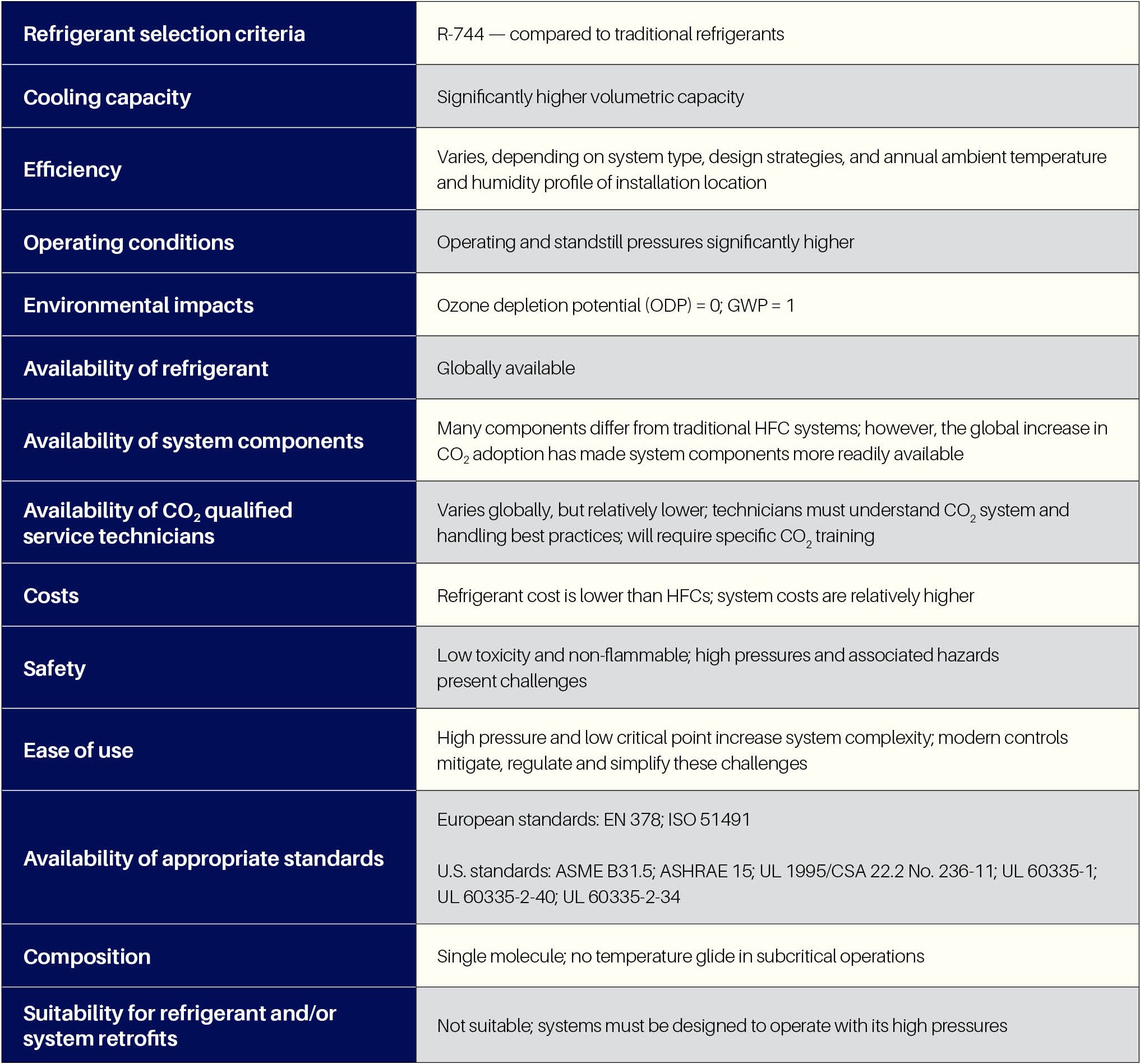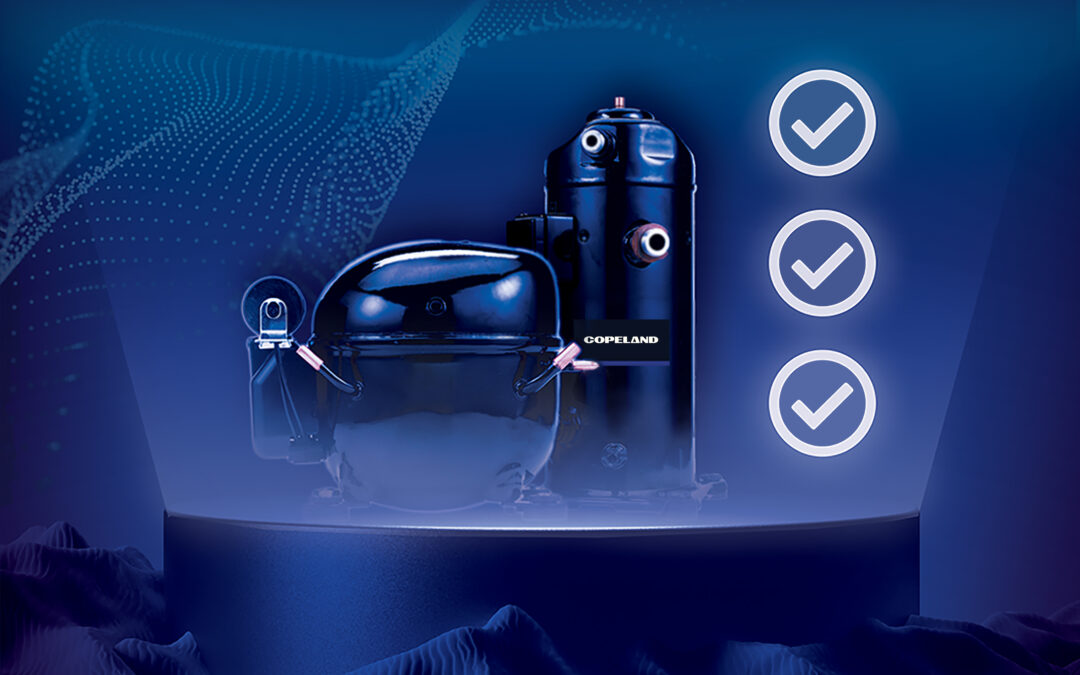*On June 1, 2023 Emerson’s Climate Technologies business became a new standalone company – Copeland. Though our name has changed, we are building on more than a century of HVACR innovation and industry leadership, and Copeland continues to offer the same products, industry stewardship, and learning opportunities you’ve grown to trust. Information found on this webpage posted before June 1, 2023 may contain our old name or branding, but you can be at ease knowing it was created with the knowledge and expertise of Copeland.
This is post two of CO2 as a Refrigerant, a blog series covering the fundamental considerations and characteristics of CO2 as a refrigerant (R-744).
When selecting any refrigerant, stakeholders must carefully consider multiple factors, including: cooling capacity, safety, environmental impacts, ease of use, costs, and availability of components and trained technicians. Table 1 summarizes these and other key criteria, while demonstrating how well R-744 meets them.
As Table 1 demonstrates, R-744 offers superior cooling capacity than legacy HFC refrigerants while meeting the demand for a sustainable alternative with low global warming potential (GWP). However, it also presents the challenges in both the application and handling of CO2 as a refrigerant.

Table 1: Relative selection criteria and characteristics of R-744
In the next post of this CO2 as a Refrigerant blog series, I’ll examine the properties of R-744 as a by-product of a naturally occurring substance (i.e., CO2).

Address Efficiency Mandates with Compression Technologies
Strategies for complying with DOE and ENERGY STAR® in self-contained and remote condensing units...
Protection for high-value shipments just got even better
We’re excited to announce the release of Copeland’s newest real-time tracker, the GO Real-Time...

Three proven strategies to prevent cargo theft
The over-the-road (OTR) transport industry is experiencing a surge in cargo thefts. As thieves...

